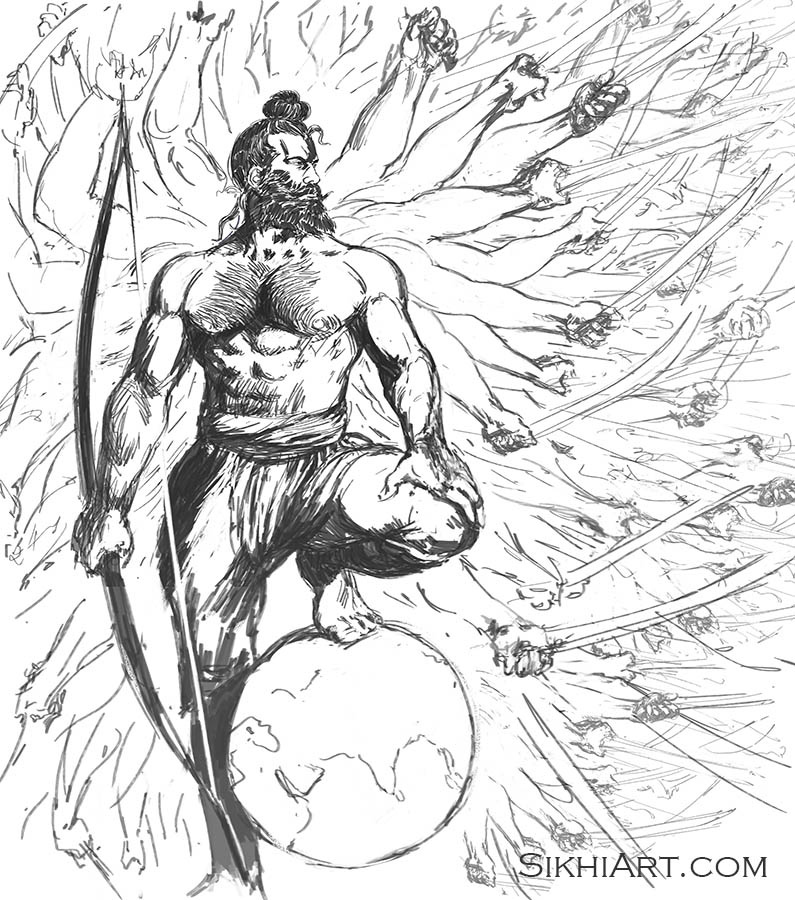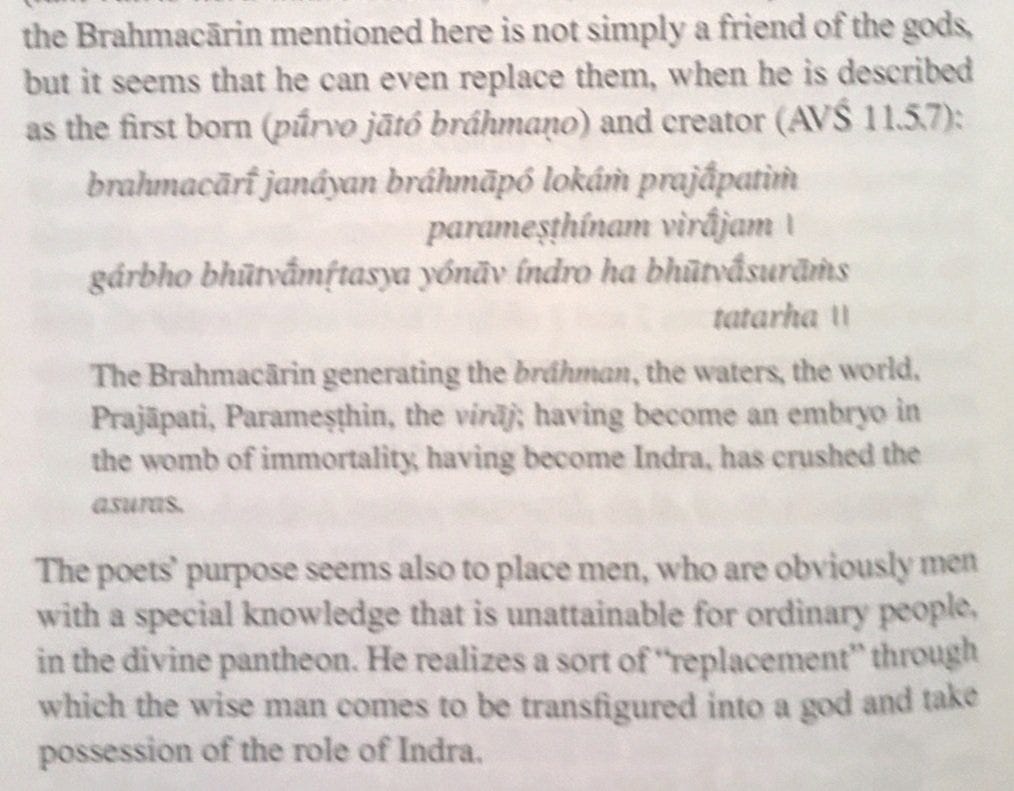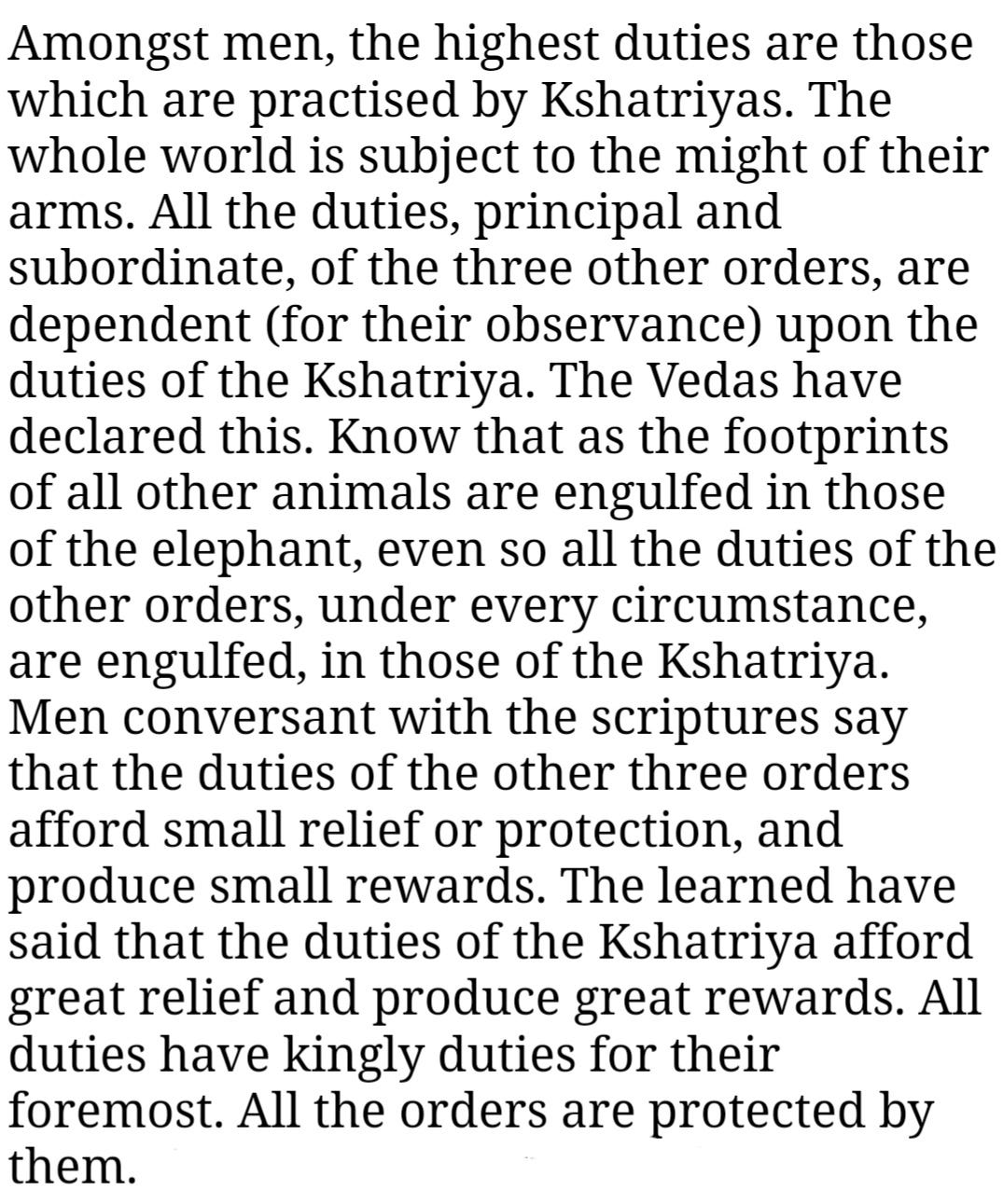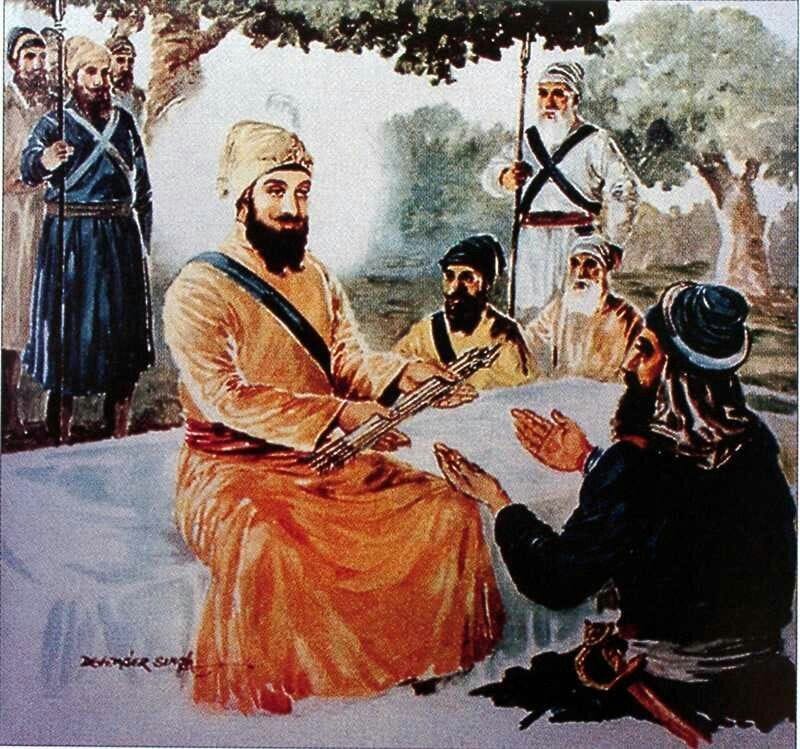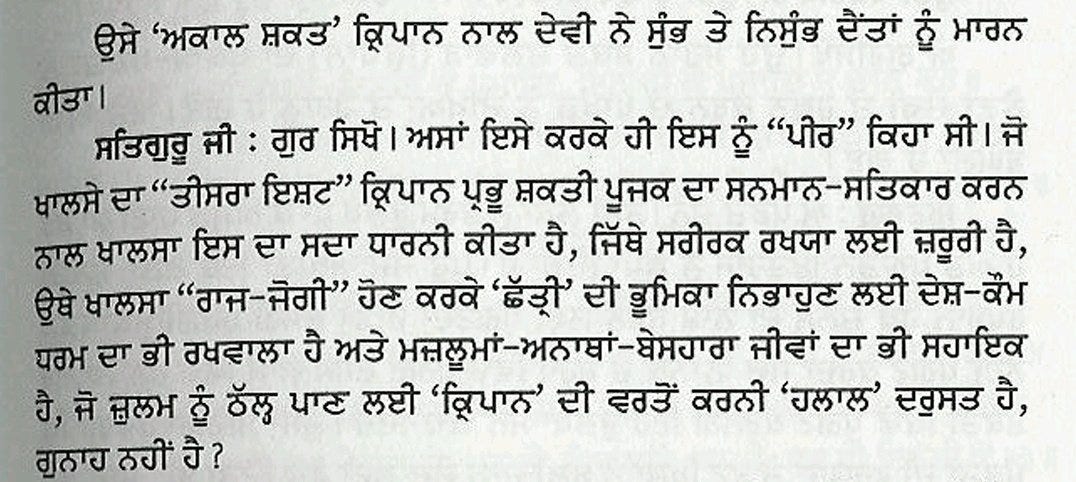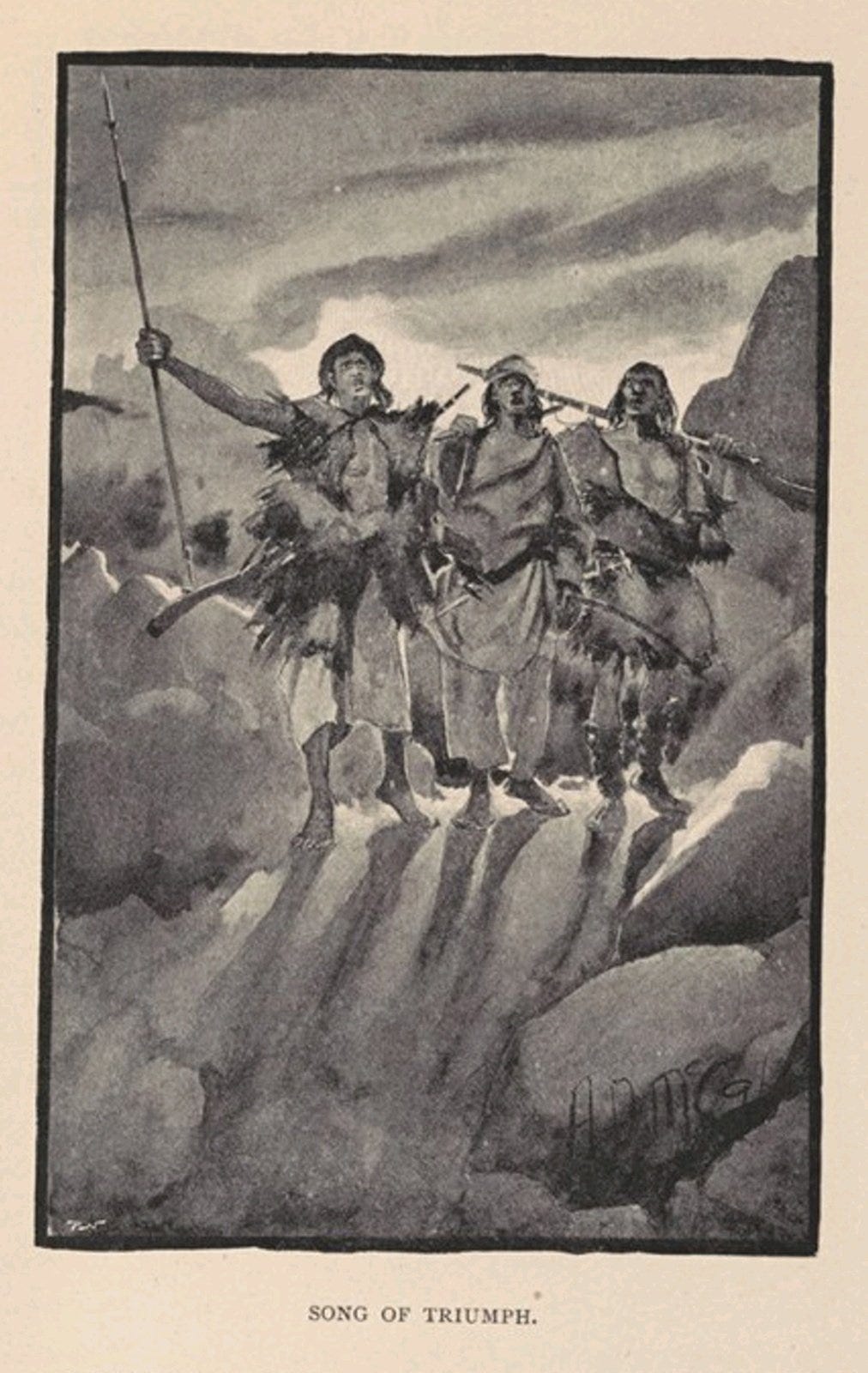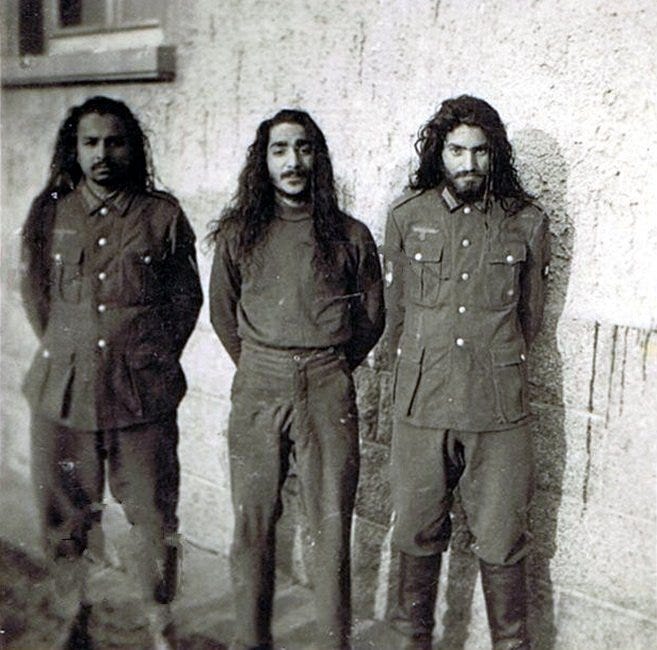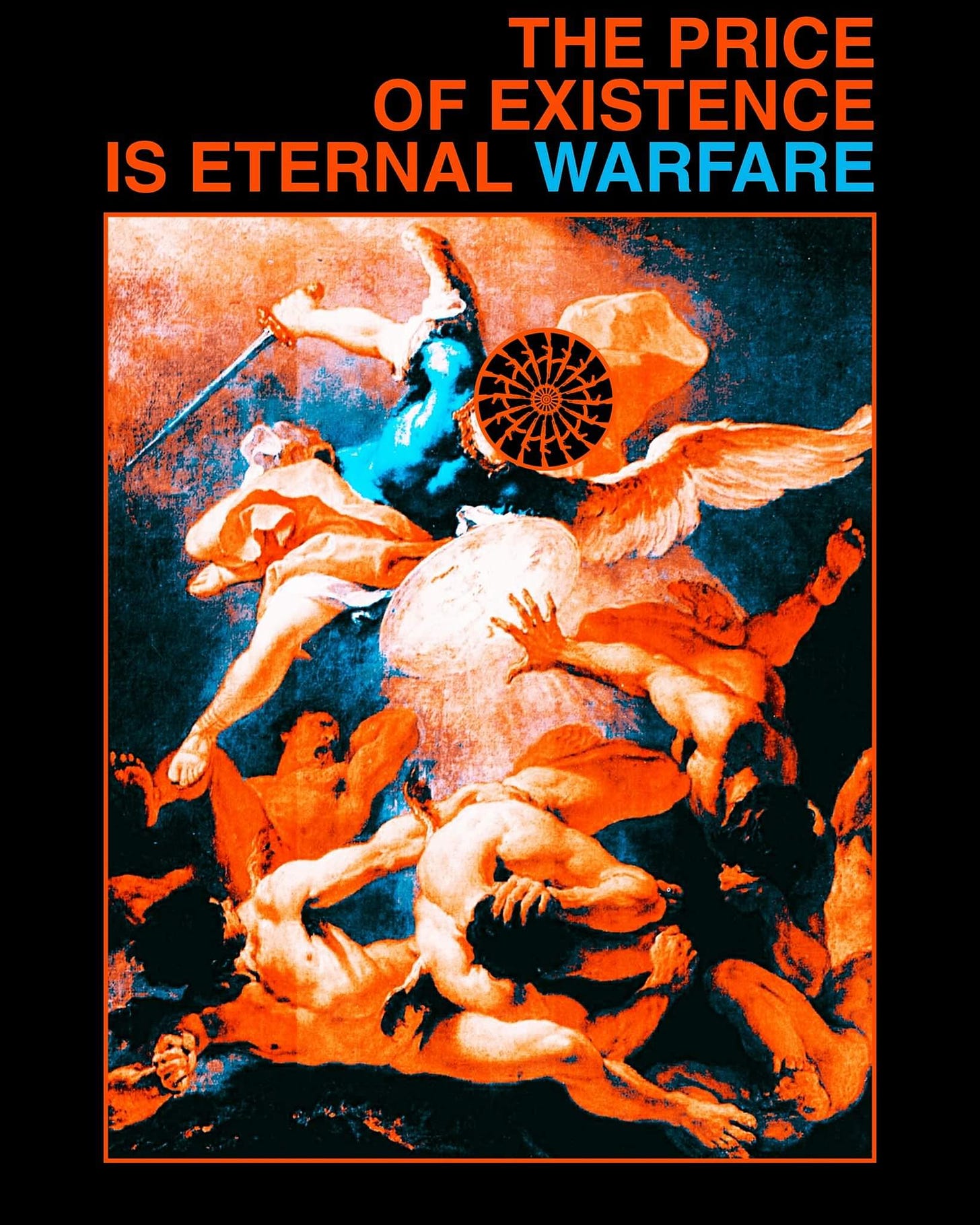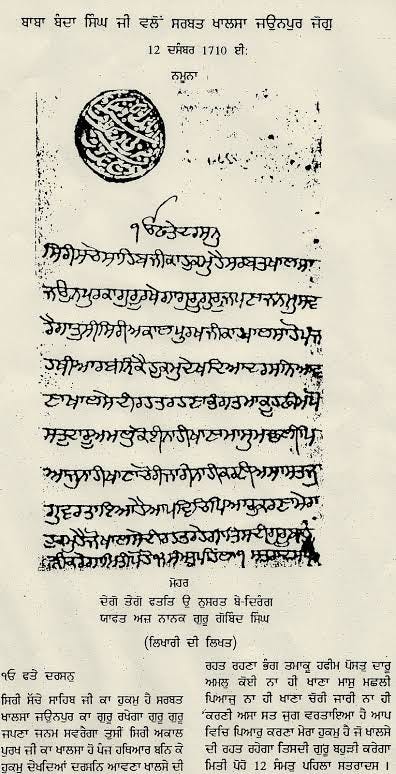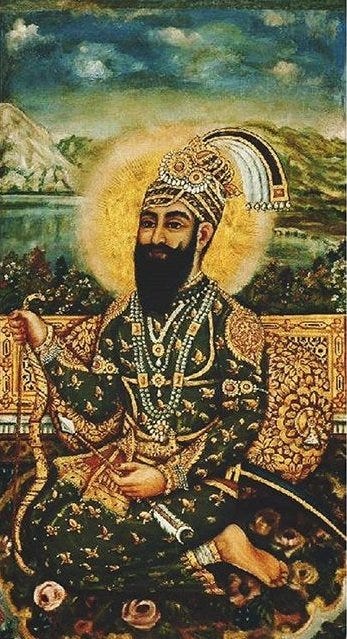Notes on sovereignty
Giani Sher Singh speaks of how Guru Gobind Singh considered the stature of the Khalsa to be "heavier" than the Gurus, heavier than Akal Purakh even (given that they are already always eternally supreme), since he rises from his worldly station to ‘encompass’ all divinity, attaining ‘fellowship’ with the gods, ascending to a divinized, demigod-like position. With the Guru's grace, “... he became Hari, he became the Guru— Lehna became Guru Angad, Guru Angad became Guru Nanak!”
— — -
‘Encompassing’
Early Indologists saw vrātyas, brahmacārins, keśins as archetypal shamanic figures, seeking to divinize themselves via ascetic-ecstatic practices that originated outside the Vedic fold. The vrātyas as “Wildekstatiker der Kriegerkaste” (Hauer, 1921) embodied both yogic and warlike elements, representing karmayoga as the path of aktion, something Hauer envisioned as a pagan ideal of “military heroism.”
Through these ascetic-ecstatic (proto-tantric/yogic) practices, these liminal figures entered a crescendo of gnostic becomings. This creates a recursive structure of cumulative identifications/substitutions, gathering together (“encompassing”) various divinities, “attaining fellowship with the gods,” signaling conquest— metaphysical sovereignty, becoming cakravartin.
— — -
This ‘encompassing’ motif is one I rely on to engage with the Khalsa's conception of sovereignty: the Khalsa as a site of archaic unity, integrating multiplicities of functions (as kṣatrī) and divinities (via gnostic union with Brahm), ordering them within its kaliyugi warmachine.
The Khalsa integrates all varnas and divinities into a transfunctional unity. ਪਾਵਨ ਪੰਥ ਖਾਲਸਹਿ ਪ੍ਰਗਟਯੋ, ਚਾਰ ਵਰਨ ਆਸ੍ਰਮ ਸੁਭ ਪੰਥਾ ॥੧॥— The sacred Khalsa Panth came into being; the true path encompassing four varnas and ashramas. Much like Mishima’s samurai, every Singh, in effect, is a complete human being, a pātiśāh anointed by the Gurus themselves.
— — -
The consecrated warrior
Heesterman (1995) contends that before Vedic society acquired a settled, sedentary character (entailing social specialization), the “consecrated warrior was the exemplar of sacrality”: a nomadic sant-sipahi, the unity of dual functions later splitting into brahmin and ksatriya. Further, he notes that the cyclical conflict between nomadic warbands and sedentary settled society was mythologically expressed through the ever-renewed fight between devas and asuras. “The devas drove about on wheels, the asuras sat in their halls.”
Miller (1997) lists “the dual representation of the warrior as a defender of society and, on the other hand, as an anti-social and capricious wreaker of violence, whose behavior is inimical to society” among definitive motifs in Indo-European martial cultures.
Akali Nihangs— ਸਭ ਕੇ ਵਾਲੀ, “guardians of everyone”— nomadic warbands of consecrated warrior-priests, driving around in all four directions (cakravartin); each beholden to no authority save the True Lord, and so a law unto himself in the mortal realms, rejecting the mores of settled civilization with brusque disdain and irreverent bursts of violence.

— — -
On initiation and freedom
To be initiated into the sacred mysteries one must first die. Shorn of self, clan, kin via a ritualized process of mystical “death to the profane condition” and “rebirth to a sacred world” (Eliade, 1957) mediated by the Guru. A metaphysical sacrificial rite, where the self is the offering, the initiate himself sacrificer and victim. Each initiation a metamorphosis, a death, a correspondence and overcoming of the self.
Banda’s tale is one of a series of becomings, each initiation signaling a death: Lachmana Dass was Madho Dass was Gurbakhsh Singh was Banda Bahadur. Each becoming evades capture by the despotic apparatus of the self, reaching its crescendo at Guru Gobind Singh's lotus feet. Banda, the Guru's beloved slave, liberated in bandagi, in serving the True Lord.
— — -
Boethius writes that he who draws closer to the ‘Supernal Mind’ is released from the “meshes of Fate” (Coomaraswamy equates Fate with karma). The Gobind Gita says one who is absorbed in God, ਉਹ ਕਰਮ ਤੇ ਸਦਾ ਹੀ ਬਚਤ ਹੌ ॥— he is eternally saved from karma. Attaining union with Brahm frees you from the shackles of karam generated by haumai: actions performed in consonance with hukam are akarma, non-action, devoid of the stains of the ego. It is only in selfless service of the Guru that we escape the puny bounds of our ego (not via fetishistic self-abnegation, but a transcendental ascension) and attain a freedom that is real, eternal— Free Will becomes synonymous with Fate.
— — -
On the unity of the idéologie tripartite in the Khalsa warmachine
Dumézil's study of Indo-European mythology conceived of sovereignty as a dyad— magician-king, jurist-priest— kshatra-as-divine and priest-as-legislator. Guru Hargobind fused these two poles into one fount— the Guru— via the miri-piri doctrine, dual swords adorning the Guru's form.
Khalsa metaphysics recontextualizes this sovereign stratum's equation with the warmachine, which is no longer a volatile exterior entity subordinated to state architecture— no longer a third pole to the sovereign dyad, oscillating both beyond and between its dual poles. Khalsa's relation with the Guru overcomes these tensions by inverting them, resolving multiplicities into formal unity. The Khalsa warmachine emerges from the Guru himself— it is the Guru's very form, subsuming within itself divine/temporal sovereignty and Bhagauti's spirit of war.
Here the ‘encompassing’ of these tripartite functions is fulfilled via a three-step operation: first, the uniting of the kshatra and priestly functions in the person of the Guru; second, the capturing of the warmachine’s formless volatility (Bhagauti) via the creation of the institution of the Khalsa; and third, the identification of the Khalsa with the Guru: the Khalsa as the Guru’s extension, as his very form.
— — -
Eschewing idioms of bhakti and passivity, the Khalsa pursues Arya Dharam, an aristocratic path of aktionism and the will to power. Traditional texts conceive of the Khalsa as raja-yogis marshaling Akal's shakti in the form of the sword-as-ishta. The worship of Bhagauti as a dynamic, vitalist practice fulfilled in righteous violence, transcending idolatry and inward contemplation. In the rancorous squalor of the kaliyuga, the Khalsa blossoms as Kalki dharam, upholding dharam and vanquishing the mlecha.
— — -
khālsā mero rūpa hai khās: The Khalsa as the eternal Arya martial form
Guru Gobind Singh's declaration of his solar genealogy (sūrajvaṃśa) in Bachittar Nataka is a conceptual device that allows the Khalsa to participate (in the Platonic sense) in Absolute, solar, cakravartin sovereignty. As sons of the Guru, the Khalsa metaphysically inherit this sovereignty from the Tenth King.
The Guru Panth’s sovereignty is validated by partaking in the Guru’s status as temporal godhead, and is supreme so long as it abides by the Guru’s codes, lives in the image of its father, Guru Gobind Singh— ਖ਼ਾਲਸਾ ਮੇਰੋ ਰੂਪ ਹੈ ਖ਼ਾਸ ॥ ਖ਼ਾਲਸੇ ਮਹਿ ਹੌ ਕਰੌ ਨਿਵਾਸ ॥— The Khalsa is my very form; I reside in the Khalsa.
— — -
The Singh is the Guru’s very image: unshorn hair tied in a topknot like the ancient Munis, the kach, keśa and kirpān as his insignia. The Khalsa saroop is a deliberate manifestation of the timeless Aryan martial form. The form of the Khalsa, in fact, harkens back to the primordial Indo-European kóryos: dark attire, unshorn keśa, kamarkasa (cammerbund), transfiguration into predatory beasts, raiding are germane to Aryan warring sodalities, recurring in the vrātyas, Nuristani siah-posh kafirs, Indo-Iranian haena, etc.
ਸਤਿ ਸ਼ਿਵੰ ਪੁਨਯ ਰੂਪ ਜਏ ॥— the true liberative form of Shiva (Mahakala, Rudra, Wotan, wild hunter, indefatigable wanderer, the “sinister presence among the mountains and forests,” Otto, 1932), the violent sylvan god of the marauding Aryan warband.
As the Devi’s vehicle— ਸਿੰਘ ਮਾਤਾ ਦਾ ਬਾਹਨ— the Singhs embody the lion/tiger (vyāghra/siṁha) imagery that evolved from the wolf/dog of the archaic kóryos-warband, becoming predators possessed of martial supremacy and battle fury, the enemy “our food like wild beasts.” (initiation as transformation-via-death: through the ceremony of the khande di pahul, the initiate is reborn as a Singh)
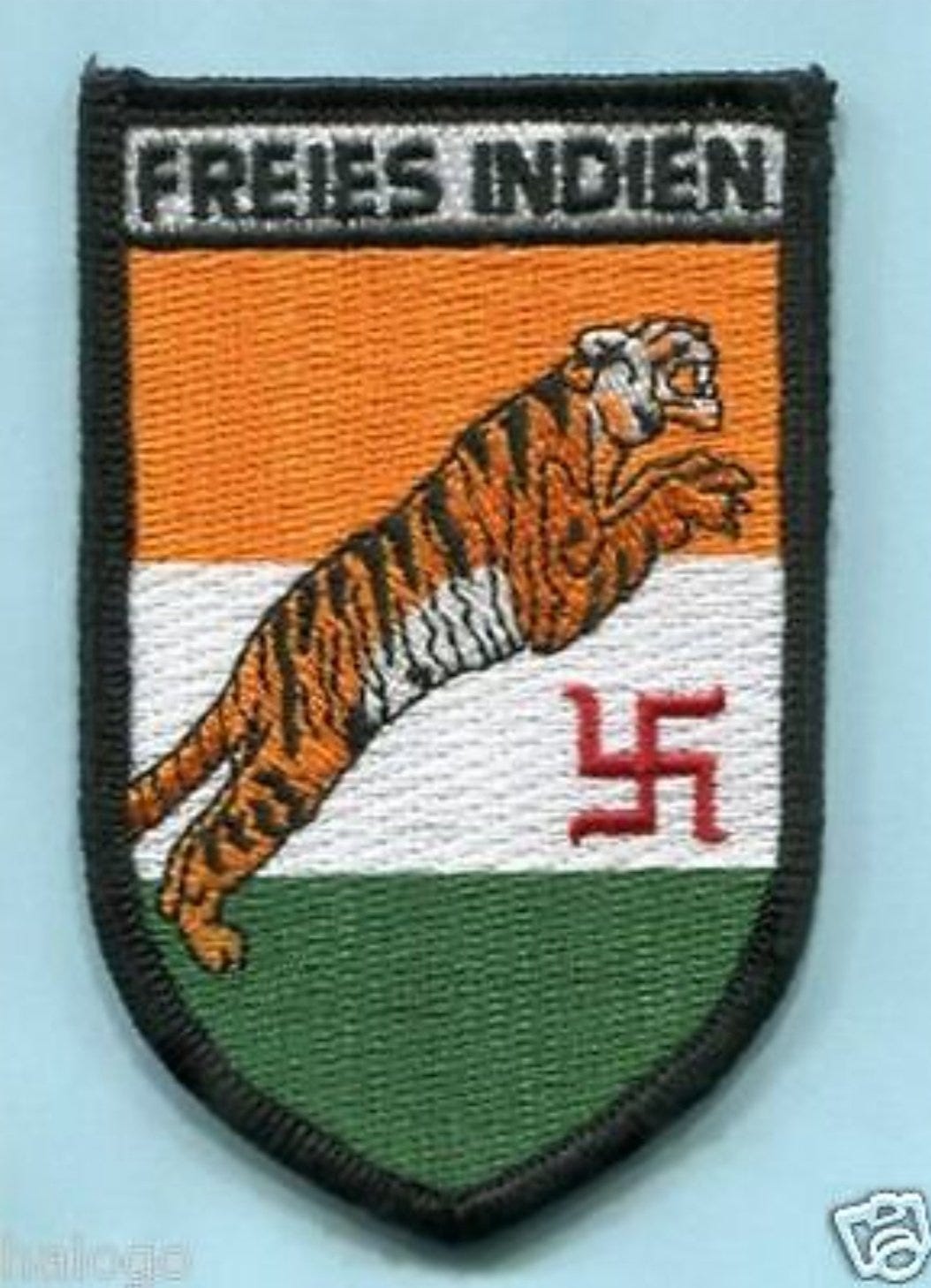
— — -
In Conclusion: on the dual poles of sovereignty
ਖਾਲਸਾ ਸੋਇ ਜੋ ਕਰੇ ਨਿਤ ਜੰਗ ॥— Khalsa is he who wages war daily. Mahakal Gurmukh Singh Nihang gives this a more interior interpretation, locating the heart itself as the site of an inner battle one must fight relentlessly with his vikaras, akin to the Islamic concept of greater and lesser jihad (the greater being the interior battle). This is in line with the metaphysical mirroring of the external with the internal, the idea that phenomenal concepts find a corresponding interior homologue in the soul— the kṣatrī who wages war to uphold the balance of dharam must also strive to sustain it within himself. In the simplest, most fundamental sense: ਮਨ ਜੀਤੇ ਜੱਗ ਜੀਤ— conquer the mind, conquer the world.
— — -
The raison d'être of temporal rule is to actualize moral-spiritual order on earth, to ensure the worldly blossoming of this interiorized sovereignty— of satiyuga, insofar as satiyuga is a sacred space in eternal time, one that we can endlessly access and return to by upholding dharam. Banda declared his rule to be the commencement of the satiyuga, granted by the Gurus— “ਅਸਾ ਸਤ ਜੁਗ ਵਰਤਾਇਆ ਹੈ”. Dharam must be realized in both spiritual and temporal terms.
— — -
And so it is with sovereignty: to the raja-yogi, to the “householder-sovereign” (Syan, 2013), sovereignty is simultaneously an interiorized as well as worldly affair, dual poles that immutably condition and enable each other. The ‘encompassing’ of divinities within the heart-lotus is mirrored by the ‘encompassing’ of functions in society, creating a self-sufficient, territorially fluid polity. The gnostic ascension of the soul towards the Guru, towards the sun-door (a procession moved by love), is mirrored in the Khalsa warmachine’s will-to-power— its ascension to patishahi via the formal schema of the Aryan warband, emerging fully-formed from Kāla's maelstrom of recursive forms.
And the Guru as the solar All-Father, the supreme Mystic-King, the divine spiritual/martial godhead upon whom this whole enterprise of sovereignty hinges.


